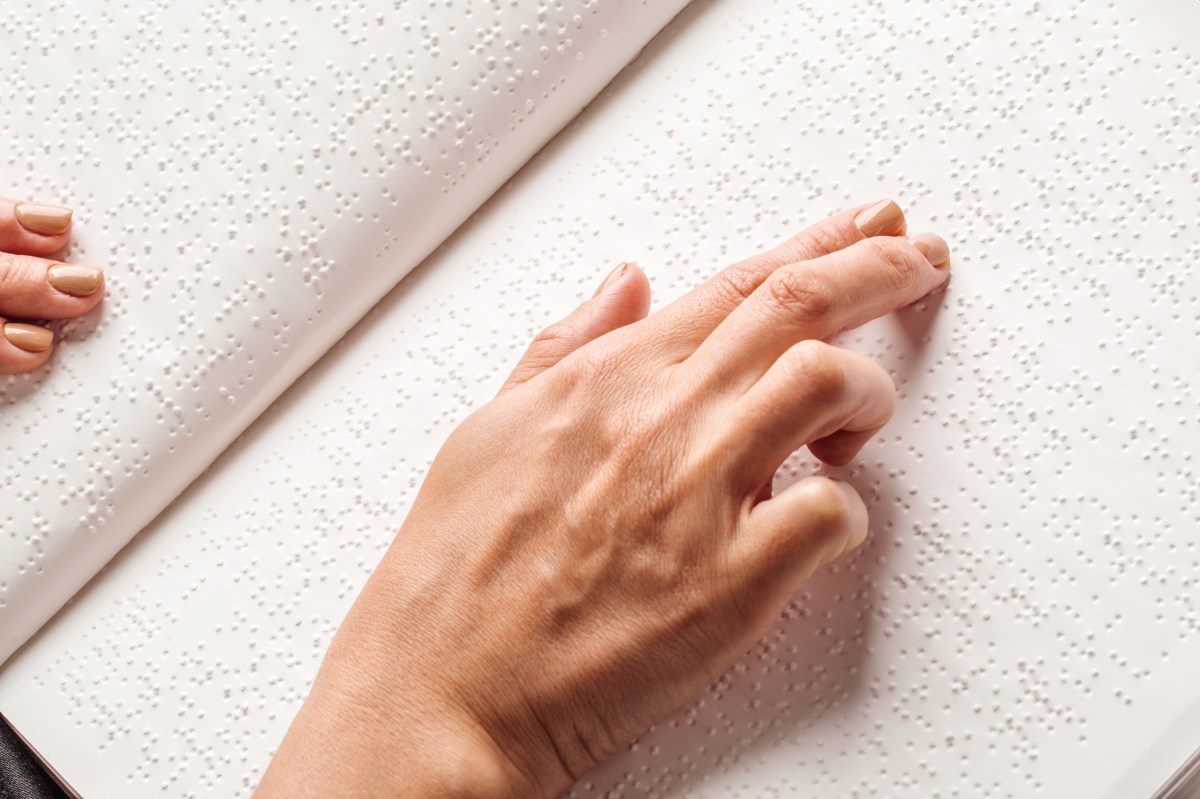How is Braille produced and how are these tiny dots distributed throughout the community? There seems to be renewed interest in this form of communication.
There are approximately 12,000 Braille readers in the UK. The UK Association of Accessible Formats (UKAAF) is the organisation responsible for Braille code regulation in the UK.
ArtsHub asks the 125-year-old, Australia-based organisation, Braille House, to take us through the process of providing this particular literacy option. It offers transcription services, a library and lessons in touch reading.
What exactly is Braille?
Braille is a tactile mode of communication, a system of raised dots named after Frenchman Louis Braille (4 January 1809 – 6 January 1852). It is not considered a language so much as a code. Though the system remains largely unchanged, Braille House notes that almost two centuries after its invention, there have been innovations including ‘refreshable Braille devices, Braille computer terminals, a RoboBraille email delivery service and Nemeth Braille, a comprehensive system for mathematical and scientific notation’.
As well as books, it’s possible to have various other materials produced in Braille, such as business cards, menus, newsletters, brochures and certificates.
How are books chosen to be transformed into Braille?
Management Coordinator Renee Cohen tells ArtsHub it’s a curated system; not all books suggested are transcribed. ‘We have a book panel that chooses the books. They go through a process and meet monthly to choose books that are of literary merit or have been put to the panel from staff, authors or anybody that would like to have a particular book transcribed. The book panel then discuss and decide.’
‘Generally, publishers or authors do not come to us. The odd self-published author does and they would need to provide the book and the above process would apply. Hopefully, they would also supply a file for transcription if their book is chosen to be transcribed. We sometimes also get grants to produce books that will be transcribed for our library. We have also had people donate books and then pay to have the books transcribed and the books then are gifted to the Braille House library.’
It’s the only Braille library in Queensland (Australia) that mails books out to the public and the only one in the country that provides monthly Braille editions of magazines like The Australian Women’s Weekly, Australian Reader’s Digest and Australian Geographic.
According to its website, Braille House currently has over 730,000 titles in 80 languages in a range of accessible formats, plus over 8000 music scores in Braille. There are picture books, junior, young adult and adult Braille books, as well as eBraille.
In the UK, the RNIB (Royal National Institute of Blind People) offers very affordable transcription services. This is a cheaper option than buying an embosser (£1,500-£10,000) and going through training. And, The Royal Mail can deliver and return braille documents free of charge under the Articles for the Blind scheme.
What’s the process for book transcription?
‘The transcription process is lengthy,’ says Cohen. ‘We either need to have the entire book typed or get a file from a publisher. If the entire book needs to be typed, the transcription process could be up to a year. Typed, formatted, SimBraille printed (SimBraille is Braille printed, not embossed, so a sighted person can see it) proofread, corrections completed, embossed, bound and then catalogued. If a file is provided, then the typed step would be removed. However, some files when converting from a PDF don’t come across altogether correctly and need more time to proofread back to the printed book.
‘Children’s twin-vision books are typed, and Braille label embossed,’ adds Cohen. ‘The Braille label is cut, then is adhered into the book. The costs for an average twin-vision book can be up to $350 to complete. A Braille novel could run into the thousands of dollars. One of the Harry Potter titles is 12 volumes long.’
Advances in technology have also enabled the ability to emboss Braille onto both sides of a page.
Cohen explains that unless they are specifically created for someone else for a fee, all books that are transcribed at the organisation are kept in the library for borrowing by members. Library membership is free.
Can print users learn to read braille?
Courses are offered at Braille House or via correspondence for those who want to learn Braille for themselves or to help those who are vision impaired. This is a particular good service for carers, education aides, and family and friends.
It should be noted, however, that not everyone can learn Braille. As the organisation points out, because it is read with fingers, ‘It requires a level of sensitivity … to distinguish the raised dots. Some illnesses (such as diabetes) or harsh use of hands/fingers in work or leisure pursuits (such as farming or rock climbing) can diminish sensitivity.’
More information and help
The Braillists Foundation is a grass-roots community group connecting braille readers with braille technology developers and funders.
The Royal National Institute for the Blind (RNIB) also has a range of information on learning and using Braille.





